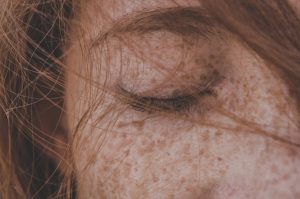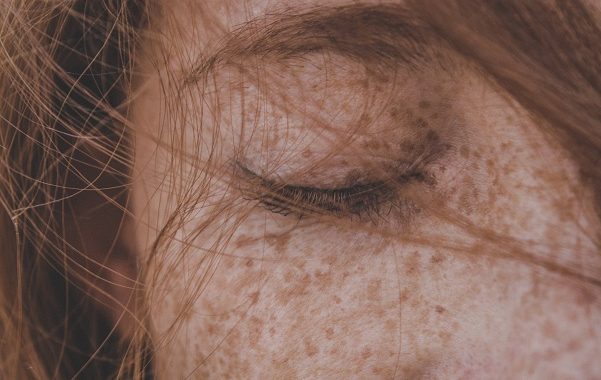
Sculptra has gained popularity as a non-surgical cosmetic treatment designed to enhance facial volume and reduce the signs of aging. While it is primarily known for its ability to add volume, many individuals wonder if Sculptra can also improve skin texture. In this article, we delve into the intricacies of Sculptra, exploring its pros and cons, examining before and after transformations, and addressing concerns about its potential impact on facial aesthetics.
Understanding Sculptra:
Sculptra, a widely used FDA-approved injectable, represents a breakthrough in non-surgical cosmetic treatments. Its key ingredient is poly-L-lactic acid, a bio-friendly and biodegradable substance that has been proven safe for use in the human body. The mechanism of Sculptra involves the stimulation of collagen production, a crucial protein responsible for skin elasticity and firmness.
The poly-L-lactic acid in Sculptra acts as a collagen stimulator, initiating a natural process that enhances the skin’s structure and suppleness. This addresses common signs of aging, such as wrinkles and fine lines, by replenishing lost volume. Unlike immediate solutions, Sculptra provides gradual and long-lasting results, offering a more subtle yet enduring rejuvenation.
The treatment process involves the injection of Sculptra beneath the skin’s surface, strategically targeting areas that require volume restoration. Over the following weeks and months, the poly-L-lactic acid encourages the body’s natural collagen production, leading to a progressive improvement in skin texture and overall appearance.
Sculptra is particularly renowned for its ability to create a natural-looking outcome, avoiding the overly dramatic changes associated with some other cosmetic procedures. By promoting a subtle rejuvenation that unfolds over time, Sculptra has become a popular choice for individuals seeking a non-invasive yet effective solution to combat the signs of aging. However, it is crucial for those considering Sculptra to consult with a qualified practitioner to discuss individual suitability, potential outcomes, and any associated risks.
�
Sculptra Pros and Cons:
Pros:
- Gradual results: Sculptra offers a subtle, natural-looking improvement over a few months, avoiding the immediate drastic changes associated with some other treatments.
- Long-lasting effects: The collagen stimulated by Sculptra can last up to two years, providing a sustained youthful appearance.
- Non-surgical: Sculptra is a non-invasive option, minimizing downtime and discomfort.
Cons:
- Bruising and swelling: Like any injectable procedure, Sculptra may cause temporary bruising and swelling.
- Multiple sessions: Achieving optimal results often requires multiple treatment sessions, spaced a few weeks apart.
- Rare complications: While uncommon, adverse effects such as lumps or nodules may occur, necessitating corrective procedures.
�
Sculptra Before and After Transformations:
Before and after photos serve as invaluable visual tools in assessing the effectiveness of Sculptra treatments. These images capture the transformative journey of individuals who have undergone the procedure, offering a tangible illustration of the treatment’s impact on skin texture and overall facial appearance.
In these photos, one can observe the gradual progression from the pre-treatment state to the post-treatment outcome. The images showcase improvements in skin texture, including the reduction of fine lines, wrinkles, and other age-related concerns. The visual evidence provides a compelling narrative of how Sculptra stimulates collagen production, resulting in a natural-looking rejuvenation that unfolds over time.
By examining a series of before and after photos, prospective patients can gain a realistic understanding of what to expect from Sculptra treatments. The visual documentation allows for a comprehensive assessment of the procedure’s effectiveness in addressing specific concerns, emphasizing the importance of consulting with a qualified practitioner to align expectations and ensure the suitability of Sculptra for individual needs.
Sculptra Ruined My Face – Addressing Concerns:
While the majority of individuals have positive experiences with Sculptra, there are isolated cases where individuals express dissatisfaction, stating that the treatment adversely affected their facial aesthetics. It is important to recognize that cosmetic procedures can yield different outcomes for each person, and factors such as individual anatomy, expectations, and injection technique may contribute to varied results.
Addressing concerns raised by those who feel Sculptra “ruined” their face involves understanding the specific issues they are facing. Common complaints may include overfilling, asymmetry, or undesired changes in facial proportions. To mitigate such risks, thorough communication between the patient and a qualified practitioner is essential before the procedure. This includes a comprehensive discussion of expectations, potential side effects, and a realistic understanding of the outcomes Sculptra can achieve.
In cases of dissatisfaction, practitioners may offer corrective measures, such as the injection of hyaluronidase to dissolve excess product or adjustments to achieve a more balanced result. These interventions highlight the importance of seeking experienced and skilled professionals who prioritize patient safety and satisfaction.
It is crucial for individuals considering Sculptra to choose a practitioner with expertise in facial aesthetics, engage in open communication about their concerns and expectations, and be aware that cosmetic outcomes can vary. Patient education and informed decision-making are key elements in ensuring a positive experience with Sculptra and addressing any potential concerns effectively.
�
Sculptra Ruined My Life – Separating Fact from Fiction:
Expressions like “Sculptra ruined my life” often stem from intense dissatisfaction, complications, or unrealistic expectations rather than objective life-altering consequences. It is crucial to approach such claims with a critical mindset, recognizing that individual experiences can be subjective and multifaceted.
Instances where individuals feel that Sculptra has negatively impacted their lives may be influenced by factors such as unmet expectations, perceived changes in facial aesthetics, or unexpected side effects. It is essential to consider the context of these claims and understand that while cosmetic procedures can have a significant impact on one’s confidence and well-being, characterizing it as life-ruining may be an extreme perspective.
Separating fact from fiction involves a thorough examination of the specific concerns raised by individuals. Complications or adverse outcomes may be addressed through consultation with experienced practitioners who can offer insights, potential solutions, or corrective measures. In some cases, emotional distress associated with cosmetic procedures may require additional support, such as counseling or psychological assistance.
To ensure a more positive experience with Sculptra or any cosmetic treatment, it is essential for individuals to communicate openly with their practitioners, manage expectations realistically, and choose qualified professionals with a track record of successful outcomes. Understanding that subjective perceptions can vary widely, both practitioners and patients play pivotal roles in achieving satisfactory results and navigating any challenges that may arise during or after the Sculptra treatment.
Does Sculptra Improve Skin Texture on Face?
Sculptra’s primary objective is to rejuvenate the face by restoring lost volume and kickstarting collagen production. While the main focus is on volumizing, the secondary effect of increased collagen production contributes significantly to improved skin texture. Collagen, a key structural protein in the skin, plays a vital role in maintaining firmness, elasticity, and a smooth surface.
Sculptra achieves this improvement in skin texture by stimulating the body’s natural collagen synthesis. As collagen levels increase, fine lines, wrinkles, and other textural irregularities become less pronounced. The skin undergoes a gradual transformation, gaining a smoother, more youthful appearance.
This indirect enhancement of skin texture sets Sculptra apart as a comprehensive facial rejuvenation option. Rather than just addressing volume loss, it tackles the underlying structural elements that contribute to skin aging. The treatment’s ability to create a harmonious balance between volume restoration and textural refinement makes it a popular choice for those seeking a natural-looking and holistic approach to facial aesthetics.
Individual responses may vary, and the extent of improvement in skin texture depends on factors such as age, skin condition, and the number of Sculptra sessions. Consulting with a qualified practitioner is crucial for a personalized assessment and to determine the optimal treatment plan tailored to individual skin texture concerns.
Does Sculptra Really Work?
Sculptra’s efficacy is substantiated by both scientific studies and positive testimonials, affirming its effectiveness in addressing volume loss and enhancing the overall facial appearance. Rigorous research has demonstrated the ability of Sculptra, with its main component poly-L-lactic acid, to stimulate collagen production and achieve natural-looking results.
Scientific studies often highlight the gradual yet significant improvements achieved through Sculptra treatments, showcasing its impact on restoring volume and rejuvenating facial features. Positive testimonials from satisfied patients further reinforce the treatment’s success in delivering desired outcomes.
However, it is crucial to acknowledge that individual responses to Sculptra may vary. Factors such as skin type, age, and the extent of volume loss can influence the results. Consulting with a skilled practitioner becomes paramount to assess individual needs and expectations. A qualified practitioner can provide personalized insights, ensuring that Sculptra is the right choice for specific concerns and guiding patients through a tailored treatment plan.
In summary, the collective evidence from scientific studies and positive patient experiences underscores the effectiveness of Sculptra. Yet, a comprehensive consultation with a knowledgeable practitioner remains essential to determine the suitability of Sculptra for individual concerns and to establish realistic expectations for the desired facial enhancements.
Does Sculptra Work for Buttocks?
While Sculptra is predominantly utilized for facial rejuvenation, a growing number of practitioners are exploring its potential for non-facial applications, including buttock enhancement. This off-label use involves injecting Sculptra into the buttocks to enhance volume and contour, providing a non-surgical alternative to traditional butt augmentation procedures.
The concept behind Sculptra for buttocks involves its collagen-stimulating properties, which could contribute to a gradual increase in volume and improved shape. However, it is important to note that using Sculptra in this way is considered off-label, meaning it has not received official approval for this specific application from regulatory authorities.
Research on the safety and efficacy of Sculptra for buttock enhancement is still limited compared to its well-established use on the face. While early reports suggest positive outcomes, comprehensive studies are needed to evaluate the long-term effects, potential risks, and optimal injection techniques for this off-label use.
Patients considering Sculptra for buttock enhancement should consult with experienced practitioners who are well-versed in this off-label application. A thorough discussion of potential benefits, risks, and realistic expectations is essential to make informed decisions about the suitability of Sculptra for achieving desired outcomes in non-facial areas. As research in this area evolves, practitioners can provide updated insights and recommendations based on the latest findings.
Does Sculptra Lift the Face?
Sculptra’s unique mechanism of action involves stimulating collagen production, which contributes to a subtle lifting effect on the face over time. The collagen generated enhances the skin’s structure and elasticity, addressing sagging skin and restoring facial contours. This gradual approach to facial rejuvenation sets Sculptra apart from surgical facelifts, which offer more immediate but invasive results.
The lifting effect of Sculptra is particularly beneficial for individuals experiencing mild to moderate sagging or loss of facial volume. It provides a natural-looking enhancement, avoiding the overtly tightened appearance often associated with surgical interventions. The gradual nature of Sculptra’s results allows for a subtle transformation that unfolds over several weeks to months.
While Sculptra may not replace the need for surgical facelifts in cases of significant sagging, it offers a non-surgical alternative for those seeking a more gradual and less invasive approach to facial rejuvenation. Individual responses vary, and consultation with a qualified practitioner is crucial to determine the suitability of Sculptra for addressing specific concerns and achieving desired lifting effects. Additionally, combining Sculptra with other non-surgical treatments may further enhance overall facial rejuvenation for a comprehensive and customized approach.
Conclusion:
Sculptra has emerged as a versatile option for those seeking non-surgical facial rejuvenation. While it is effective in addressing volume loss and contributing to improved skin texture, it is crucial to weigh the pros and cons, manage expectations, and consult with a qualified practitioner to ensure a safe and satisfactory experience.
Further Reading:
Sculptra Receives FDA Approval for Cheek Wrinkles
5 Ways Sculptra Restores Volume In Your Face
What Are the Benefits of Sculptra?
FAQs:
Does Sculptra help skin texture?
Yes, Sculptra can help improve skin texture. As an injectable treatment containing poly-L-lactic acid, it stimulates collagen production, addressing fine lines and wrinkles. The gradual enhancement of collagen leads to smoother, more youthful skin texture over time. While primarily known for restoring volume, Sculptra’s indirect impact on skin texture makes it a popular choice for those seeking non-surgical facial rejuvenation. Individual results may vary, and consultation with a qualified practitioner is essential to determine suitability for specific concerns.
Does Sculptra make skin thicker?
Yes, Sculptra stimulates collagen production, which can contribute to increased skin thickness. By promoting collagen synthesis, Sculptra enhances the skin’s structure and volume over time, leading to a thicker and more youthful appearance. The gradual nature of this process allows for natural-looking results and improved skin texture. It’s essential to consult with a qualified practitioner to understand individual expectations and determine if Sculptra is a suitable option for specific concerns.
Does Sculptra change your face shape?
Sculptra can subtly alter face shape by restoring lost volume. As it stimulates collagen production, it enhances facial contours, providing a natural and gradual lift. However, the changes are generally subtle, focusing on rejuvenation rather than significant restructuring. It is important to consult with a skilled practitioner to discuss specific expectations and determine if Sculptra aligns with desired results. Individual responses may vary.
Does Sculptra help with skin laxity?
Sculptra can address mild skin laxity by stimulating collagen production, providing a gradual tightening effect. While it may not replace surgical interventions for severe laxity, it can improve overall skin texture and firmness. Optimal results often require multiple sessions, and individual responses vary. Consulting with a qualified practitioner is crucial to assess suitability and set realistic expectations for addressing specific skin laxity concerns.
Can you share any Sculptra problems photos?
Unfortunately, I cannot provide or display photos. However, individuals considering Sculptra should consult with a qualified practitioner who can share before-and-after images, discussing potential outcomes and addressing any concerns about Sculptra treatments.



